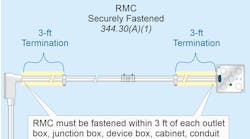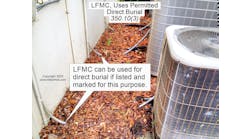Q. Where in the Code are standard ampere ratings for overcurrent protection devices?
See the answer below.
Underlined text denotes a 2017 NEC change.
A. The standard ratings in amperes for fuses and inverse time breakers are shown in Table 240.6(A). The use of fuses and inverse time circuit breakers with nonstandard ampere ratings are permitted [Sec. 240.6(A)].
Additional standard ampere ratings for fuses include 1, 3, 6, 10, and 601.
Fuses rated less than 15A are sometimes required for the overcurrent protection of fractional horsepower motor circuits [Sec. 430.52], motor control circuits [Sec. 430.72], small transformers [Sec. 450.3(B)], and remote‑control circuit conductors [Sec. 725.43].
The ampere rating of an adjustable circuit breaker is equal to its maximum long‑time pickup current setting [Sec. 240.6(B)].
The ampere rating of adjustable‑trip circuit breakers that have restricted access to the adjusting means is equal to their adjusted long‑time pickup current settings [Sec. 240.6(C)].
These materials are provided to us by Mike Holt Enterprises in Leesburg, Fla. To view Code training materials offered by this company, visit www.mikeholt.com/code.





